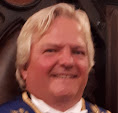Dionysian Artificers - Who knows What?
It appears that, at a very early period, some contemplative men were desirous of deducting from the observation of nature, moral rules for the conduct of mankind. Astronomy was the science selected for this purpose; architecture was afterwards called in aid of this system; and its followers formed a society or sect, which will be the object of this enquiry.
The worship of the sun is generally traced to Mitraic rites, and those invented by the Magi of Persia. But if the sun could be made an object of veneration, if the preservation of fire could be thought deserving of religious ceremonies, it is more natural that it should be with a people living in a frozen clime, to whom the sun is the greatest comfort, whose absence under the horizon for three days is a deplorable event, and whose appearance above the horizon a real source of joy.
Not so in Persia, where the sun is never hidden for three days together under the horizon, and where its piercing rays are so far from being a source of pleasure, that to be screened from them, to enjoy cool shades, is one of those comforts, to obtain which all the ingenuity of art is exerted. The worship, therefore, of the sun, and the keeping sacred fires, must have been a foreign introduction into Persia.
At the remote time before alluded to, the sun entered the sign Taurus, at the summer equinox, and the year was begun at this period among the Egyptian astronomers. Afterwards, in consequence of the precession of the equinoxes, the summer equinox took place in the sign of Aries; hence part of the Egyptians transferred their worship from the bull or calf to the ram; while others continued to worship the bull.
We may explain this in the language of our modern astronomers by saying, that some of the learned Egyptians continued to reckon by the moveable zodiac, while others reckoned the year by the fixed zodiac; and this circumstance produced a division of sects in the people, as it was a division of opinion, amongst the learned.
The Persians, who followed the tenets of Zerdoust, called by the Greeks Zoroaster, having received the same doctrines upon the mystical contemplation of the sun, made also the same metaphysical application to the soul, of the passage of the sun through the signs; of the zodiac.
About fifty years before the building of the Temple of Solomon in Jerusalem, a colony of Grecians, chiefly Ionians, complaining of the narrow limits of their country, in an increased population, emigrated; and having been settled in Asia Minor, gave to that country the name of Ionia.
These Ionians, participating in the improved state of civilization in which their mother country, Greece, then was, cultivated the sciences, and useful arts; but made themselves most conspicuous in architecture, and invented or improved the order called by their own name Ionian.
These Ionians formed a society, whose purpose was to employ themselves in erecting buildings. This sect or society was now called the Dionysian Artificers, as Bacchus was supposed to be the inventor of building theatres; and they performed the Dionysian festivities.
We find recorded, that these societies, and their utility, were many years afterwards inquired into, by Cambyses, king of Persia, who approved of them, and gave to them great marks of favour.
Let us now notice the passage of the Dionysian Artificers to Judea. Solomon obtained from Hiram, king of Tyre, men skilful in the art of building, when the Temple was erected at Jerusalem. Amongst the foreigners, who came on this occasion, we find men from Gabel, called Giblim; that is to say, the Ionians settled in Asia Minor, for Gabbel, or Byblos, was that city where stood the temple of Apollo, where the Eleusinian rites or Dionysian mysteries were celebrated, as we have already stated.
Josephus, probably ignorant of the secret tenets of the Essenians, also accuses them of worshipping the sun, or saying prayers before the sun rising, as if to incite him to rise. But this very accusation, again, identifies them with the sect of the Dionysian Artificers, who, as appears by the reasons above stated, were supposed to adore the sun.
The Dionysian Artificers existed also in Syria, Persia, and India; and the Eleusinian mysteries were preserved in Europe, even at Rome, until the eighth century of the Christian era. After this epoch, Europe was visited by the most barbarous nations who, persecuting every scientific research, scattered a general darkness, in which all the labours of the ancients, in favour of mankind, were nearly lost, in the general ignorance of their times.
In the tenth century, during the wars of the crusades, some societies were instituted in Palestine, and Europe, which adopted some regulations resembling those of the ancient fraternities. But is was in England, and chiefly in Scotland, where the remains of the old system, identified with that of the Dionysian Artificers, were discovered in modern times.
By Hippolyto Joseph Da Costa, esq. 1820, London


0 Comments:
Post a Comment
<< Home